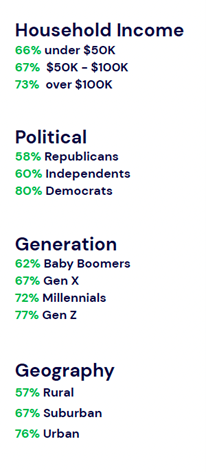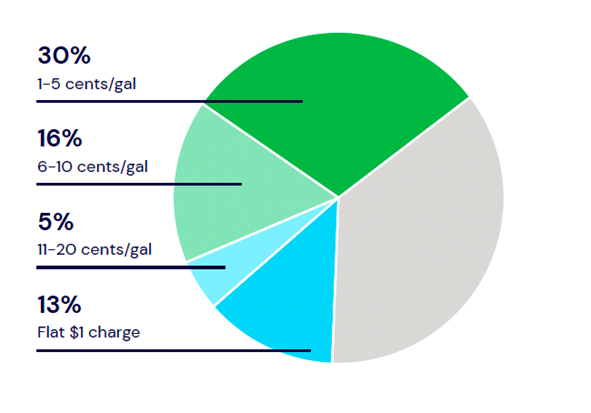
With 74% of US consumers saying they care about the environmental impact of the products they buy, sustainability has become a growing priority for national convenience retailers and consumer packaged goods (CPG) brands.
As fuel and convenience businesses shape their sustainability strategies, they must gain greater insight into consumer preferences to understand where to invest if they want to align with those changing buying behaviors.
Consumer sustainability trends
The PDI Business of Sustainability Index shows that consumers not only choose eco-friendly products over alternatives, but they’re also willing to pay more for them. Consumer willingness to spend more on sustainable products has been steadily growing year over year, with 68% of consumers agreeing they would pay higher prices for eco-conscious products in 2023, up from 64% in 2021.
That is, if they can identify those types of products.
The power of authenticity
When it comes to gaining a competitive advantage through sustainability efforts, honesty and authenticity are key.
Greenwashing, the use of misleading labeling and marketing efforts that paint a brand as more sustainable than it is, has created confusion among consumers when it comes to identifying truly sustainable products and services. In fact, 79% of consumers report that they want an easier way to identify environmentally friendly companies.
To attract these eco-conscious consumers, brands need to establish trust and communicate their offerings clearly. Over 50% of buyers say they want clear language on product labeling and 40% say they would appreciate third-party or independent validation.
Growing up green
Consumer sustainability preferences are, not surprisingly, most pronounced in younger generations, urban areas, and more affluent households. However, the willingness to pay more for eco-friendly products and services crosses several demographic boundaries.
Who is willing to pay more for eco-friendly products?

In each of these demographic groups, the majority of consumers are willing to spend more on environmentally conscious brands, a compelling measure of the rising trend toward wanting more sustainable choices.
Reducing consumers’ carbon footprint
The fuel industry has seen perceptions of gas and emissions change drastically in the past few years with the rising popularity of electric vehicles. However, as range anxiety, limited charging infrastructure, and price barriers continue to persist, many consumers are embracing ways to reduce the carbon footprint of their Internal Combustion Engine (ICE) vehicles.
Insights from the PDI Business of Sustainability Index reveal that 64% of drivers are willing to pay more for gas if their carbon emissions are offset.
By how much?

Developing a sustainability strategy
With more brands entering the sustainable product and service space each day, staying competitive is key. As mentioned above, honesty and authenticity go a long way. But retailers and brands also need to stay ahead of the curve when it comes to understanding the latest trends in consumer sustainability preferences and showing a stronger commitment through longevity. As consumer demand continues to grow for eco-friendly products, your brand must align with what consumers view as a more sustainable lifestyle.
Here are five significant business strategies you can adopt to stay ahead of the sustainability curve:
- Take a leadership role—act before the market forces you to
- Define a holistic sustainability strategy—even if you move incrementally
- Once you commit, keep going—sustainability is a long-term investment
- Engage more effectively with consumers—promote your efforts to earn their trust
- Validate your efforts—work with independent third parties to build credibility
You can thrive in today’s digital economy. Contact us today to learn how we can help you transform your business.







